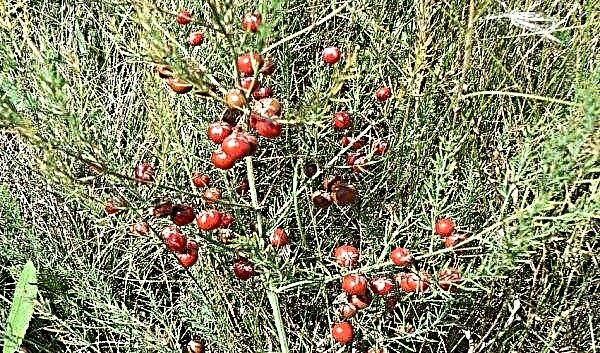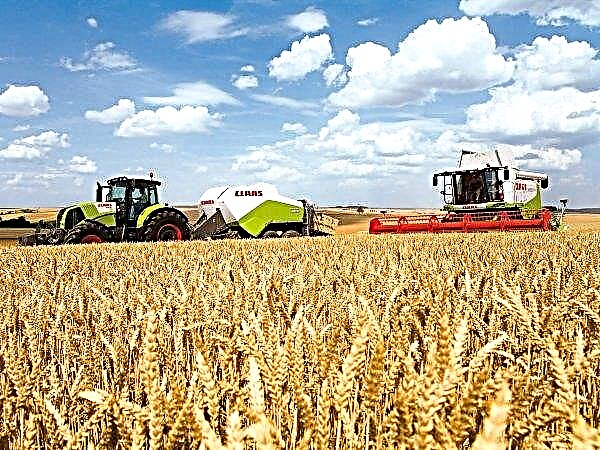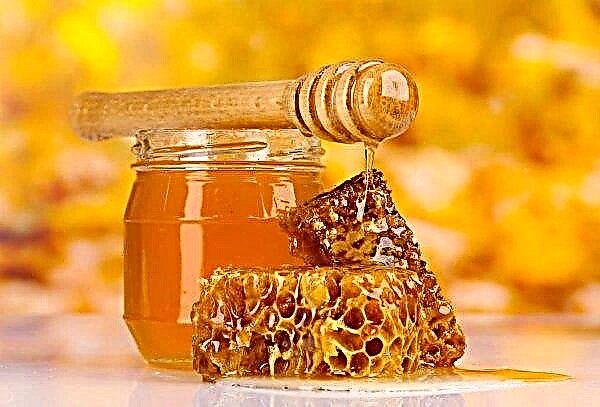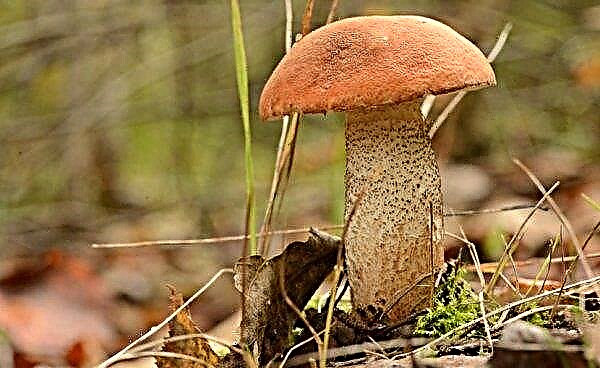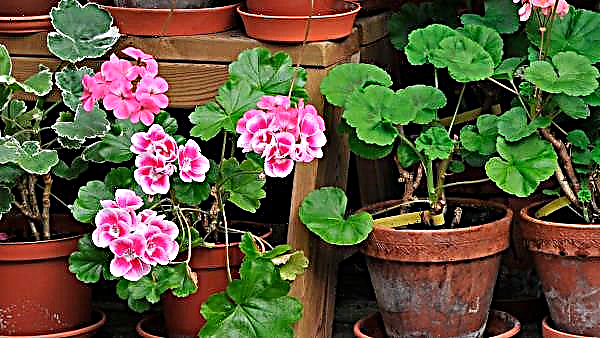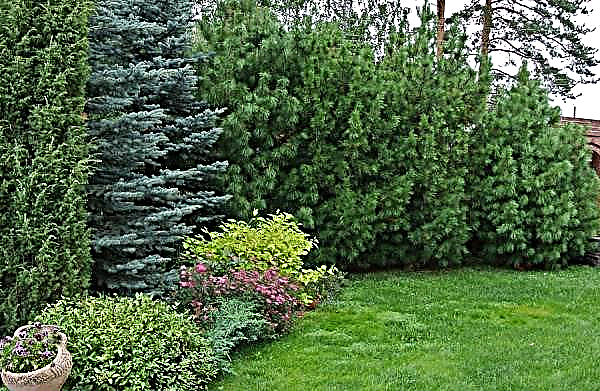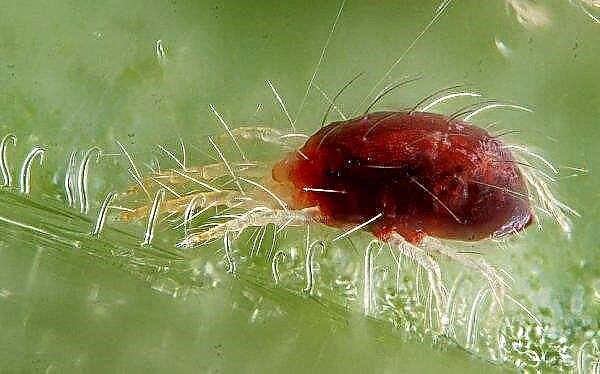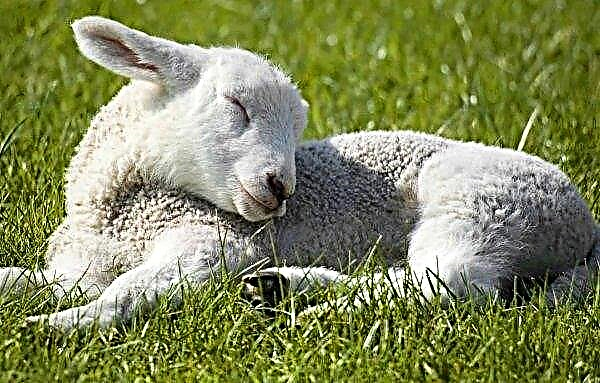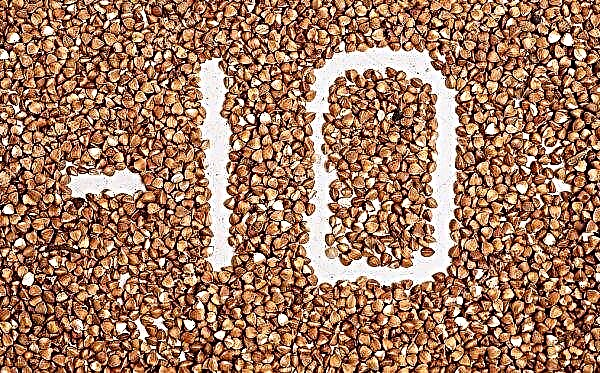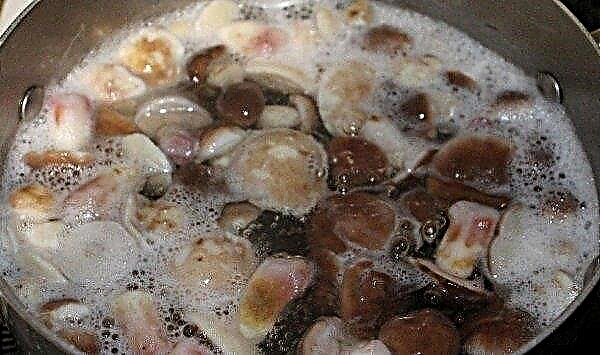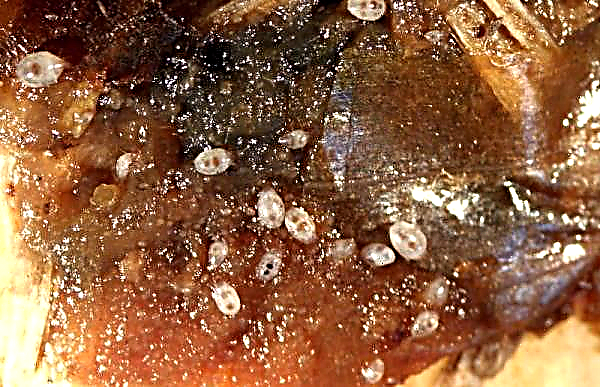The choice of cucumber varieties for owners of greenhouses is important. Often, the choice is limited to parthenocarpic hybrids. Such cucumbers are distinguished by excellent taste, subtle seeds, lack of bitterness and do not need pollination. One of these salad-style hybrids is the Stella variety.
Description and characteristic
The Stella cucumber variety is a parthenocarpic mid-early hybrid, obtained by breeders of the All-Russian Research Institute of Vegetable Growing in 1984 and recommended for indoor cultivation in the Northern, North-Western, Central, Volga-Vyatka, Central Black Earth, North Caucasian and Middle Volga regions. The variety is characterized by resistance to ascochitosis, root rot and powdery mildew. This hybrid is thermophilic and does not like sudden weather changes.
Did you know? Cucumber is the lowest calorie fruit - in 100 g of the product contains no more than 15 kcal. Glycemic index 20.
Bush description
In this variety of cucumbers, a medium-tall bush forms, which branches little. Its lashes grow long, up to 1.5 m. The leaves have a green color and a heart-shaped. The plant is medium-pubescent with a white edge. Up to 8 fruits can be tied in a knot. It is characterized by a long fruiting period.
Fruit characterization
Stella cucumbers have the shape of a cylinder with a smooth surface without spines and with mild tubercles. The length of fruits with a diameter of 3.5–4.5 cm is in the range of 20–25 cm, and their weight is 150–274 g. Zelentsy has excellent taste. They have a juicy crisp flesh, small seeds and a thin peel. They are recommended for fresh consumption. They, sometimes, are used in conservation in a cut form.
Did you know? Cucumbers for year-round consumption were grown by the ancient Romans. So in winter, they could also treat themselves not only to salted vegetables.
Productivity
Thanks to the bunching of fruits and their large sizes, it is possible to harvest rich crops. The yield of the variety is 23 kg per 1 m², but can reach 27 kg. The yield of the harvest is “friendly”.
Timing of flowering and ripening
Blooming female type, not requiring pollination. Variety ripening is medium early. The first fruits begin to collect from the 65th day from the appearance of seedlings.
Pros and cons of the variety
- This variety, most of all, was liked by the owners of greenhouses for the following qualities:
- high productivity;
- lack of need for pollination;
- resistance to many diseases;
- excellent presentation of vegetables;
- excellent taste.
- Disadvantages:
- the size of the fruit is not suitable for preservation in general;
- the impossibility of procuring your own seed material.
Growing Features
Stella cucumbers can immediately be sown in protected ground. To obtain an earlier harvest, seedlings are used.
Important! You should not plant cucumbers repeatedly in the same place or after other pumpkin. The best predecessors will be potatoes, tomatoes, legumes and siderates.
Planting cucumbers in seedling
For planting, take seedlings aged 26-30 days. At this time, the plant should form 3-4 true leaves. Overgrown specimens may lag in fruiting. The soil for cucumbers should be fertile and loose. It should be prepared in advance. In the spring, mineral fertilizers are added, for each square meter - 40 g of superphosphate, 15 g of ammonium nitrate and 25 g of potassium salt. During the autumn digging, manure is introduced - 4–9 kg per 1 m², depending on the type of soil. Planting is carried out when the air temperature in the daytime reaches + 22 ... + 24 ° С, and at night it will be + 17 ... + 18 ° С. When planting seedlings, they maintain a gap between rows of 1–1.2 m, and between plants - 25–35 cm. 2-3 plants fall on 1 m². Landing is best done in the evening.
During the autumn digging, manure is introduced - 4–9 kg per 1 m², depending on the type of soil. Planting is carried out when the air temperature in the daytime reaches + 22 ... + 24 ° С, and at night it will be + 17 ... + 18 ° С. When planting seedlings, they maintain a gap between rows of 1–1.2 m, and between plants - 25–35 cm. 2-3 plants fall on 1 m². Landing is best done in the evening.
Wells for plants are formed so that seedlings, together with the root system and a lump of earth, are freely placed. Before planting, for 3-4 hours, seedlings are abundantly moistened. After, the plants are carefully removed from the tank and, together with the soil, are planted in prepared wells. Then seedlings are covered with soil 2-3 cm above the root neck, ramming the ground. If seedlings were grown in peat pots, then planting is carried out with them - the pot is placed in the hole and covered with soil two to three centimeters above its upper edge. After planting, watering is carried out, at the rate of 1-2 liters per 1 hole.
If seedlings were grown in peat pots, then planting is carried out with them - the pot is placed in the hole and covered with soil two to three centimeters above its upper edge. After planting, watering is carried out, at the rate of 1-2 liters per 1 hole.
Video: planting seedlings of cucumbers in the open ground
Planting Cucumber Seeds
Stella cucumbers are sown when the soil warms up to +15 ... + 18 ° C. This time usually falls between the end of April and the beginning of June, depending on the climate and region. 3 pieces of seed are placed in the wells, with an interval of 10 cm from each other. The distance between the rows can withstand 35–40 cm. The first sprouts appear 6-8 days after planting. If the packaging does not indicate that the seeds are processed, then they should be disinfected. For this, the seeds are kept in a weak solution of potassium permanganate. Then it should be washed and dried, spread out on a napkin.
The first sprouts appear 6-8 days after planting. If the packaging does not indicate that the seeds are processed, then they should be disinfected. For this, the seeds are kept in a weak solution of potassium permanganate. Then it should be washed and dried, spread out on a napkin.
Important! When planting seeds in open ground, they must be dried, as in not quite warm ground, planting material can begin to rot.
Cucumber Care
To get a high yield, it is necessary to organize proper care for this plant crop.
Soil moisture
Before flowering, watering is carried out once every 5–7 days, at the rate of 3–6 l per 1 m². From the moment of flowering, watering is intensified, it is carried out every 2-3 days. At the same time, 6-12 liters are left per 1 m². Water temperature for irrigation should be warm and within + 20 ... + 25 ° С. Cold water can negatively affect the crop. Watering itself must be carried out at the root. Humidification should be carried out in the evening or in the morning. After irrigation, soil loosening should be carried out. During this process, weed should also be removed.
Watering itself must be carried out at the root. Humidification should be carried out in the evening or in the morning. After irrigation, soil loosening should be carried out. During this process, weed should also be removed.
Fertilizer
To get a good harvest, you need to feed 5 times over the entire growing season. For this purpose, organics and mineral fertilizers are used. The first fertilizer application is carried out at the initial stage of the appearance of color. For feeding use the following solution - 250 ml of rotted mullein, as well as 1 tsp of urea, potassium sulfate and superphosphate are mixed in 10 l of water.
Mullein can be replaced with sodium humate (1 tbsp). During the fruiting period, feeding is performed 4 times. At the beginning of the formation of the fruit, a solution is used - 1 tablespoon is taken per 10 liters of water. l nitrofoski and 250 ml of overripe chicken droppings.
For all other dressings, the following composition is used - in one liter of water one teaspoon of potassium sulfate and 0.5 l of rotted mullein are dissolved. The break between dressing is 14-15 days. About 1 liter of such a solution is consumed per 1 m² of planting. Overcooked chicken droppings or manure can be replaced with such humic fertilizers as “breadwinner”, “Fertility”, “Ideal” or sodium humate.
Fighting plant diseases and pests
The Stella cucumber variety belongs to hybrids, so it is quite resistant to diseases. However, under unfavorable conditions and violation of agricultural production techniques, various diseases can occur, and some pests will appear, which can significantly reduce the yield. Therefore, it is important when caring for this plant crop to timely identify the problem and take appropriate measures to eliminate it.
Did you know? Cucumber native to India. Its name in Sanskrit is the name of the Raja, who had 60 thousand children.
Consider the main diseases of cucumbers that can occur:
- Powdery Mildew Symptoms of the disease are a whitish coating on the leaves, which, then, spreads to all parts of the plant. The leaves begin to dry, and the development and growth of the bush stops. To eliminate the disease, treatments with fungicidal preparations such as Trichodermin, Gliocladin, Fitosporin-M are carried out. Excessively affected by powdery mildew specimens should be disposed of.
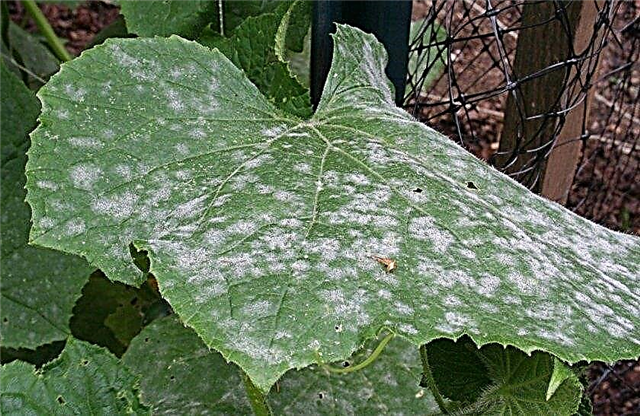
- Cladosporiosis. In this case, brown sores appear on the plant culture, including the fruits. To cope with such a disease, it is necessary to stop watering the bushes, cut off the affected areas, and also be sure to carry out the treatment with the drug “Fundazol”.

- White rot. It appears as a whitish, sticky coating on the bush and fruits. The plant begins to rot. To eliminate the problem, remove the affected areas of the plant. It is necessary to carry out a solution treatment - dilute 10 g of urea, zinc sulfate and copper sulfate in 2 l of water.
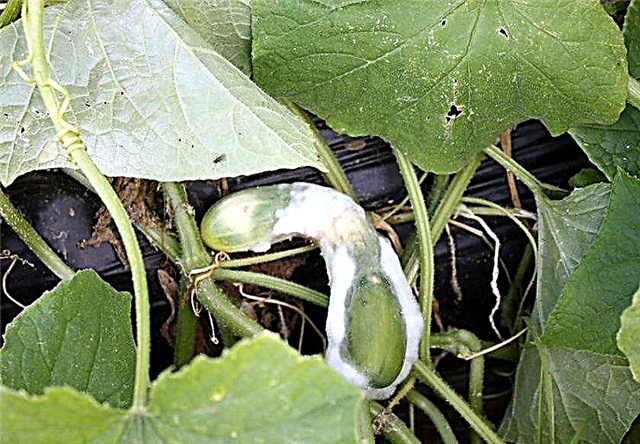
- Downy mildew. Signs of the disease are yellow spots on the leaves, which begin to gradually dry and die. In this case, hydration and feeding are completely stopped for 4 days, and Polycarbacin treatments are performed.
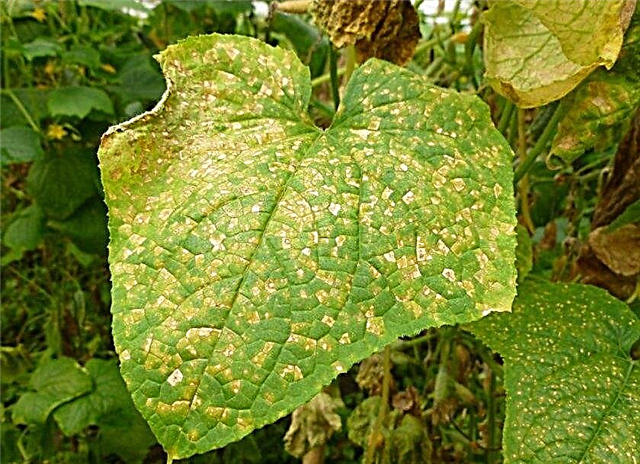
The most common plant pests:
- Whitefly The whitish midge feeds on the sap of the plant, causing leaf wilting. To cope with this insect, they spray the planting with infusion of garlic, based on: 150 g of chopped garlic per 1 liter of liquid. You can use the chemical product "Inta-Vir."

- Aphid. Small, greenish-colored beetles that also feed on the sap of the plant by eating leaves. They multiply rapidly and can cause serious harm. Against aphids, treatment with a solution of wood ash helps well. For 5 l of water, 100 g of ash and 40 g of crushed laundry soap are taken (for better adhesion). A good effect is given by Confidor or Commander preparations.

- Spider mites. These small pests feed on leaves. You can identify them by the presence of the thinnest web. To eliminate the pest, they are treated with a soap solution, which is prepared at the rate of 1 tbsp of soap powder per 1 liter of liquid. Good from these insects helps the drug "tick-borne".
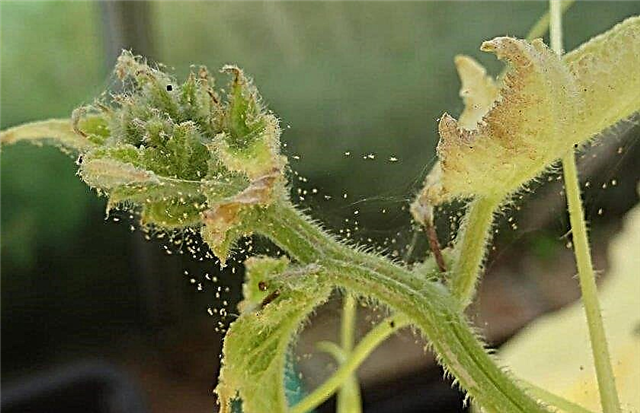
If you regularly inspect the plants and at the first sign of illness or the appearance of insect pests take appropriate measures, then with such difficulties it will be easy to cope and save the crop.
Storage and features of the collection of cucumbers
Stella cucumbers can be harvested from the second half of June until the end of August, as they ripen, when the green leaves grow to the desired size. They are great for fresh consumption. Cucumbers can also be used for preservation (in slices).
Did you know? Cucumber juice has proven itself in antiquity as a means to whiten skin and smooth wrinkles. It is still used in the cosmetics industry and in home skin care.
Fresh vegetables are stored for no more than 2 days in room conditions, then they gradually begin to wither. In the refrigerator in the vegetable section or in a bag with openings for air, they can lie for 5 days. In the cellar when stored in boxes and at a temperature of + 6 ... + 8 ° C, storage can take up to 10 days. Stella cucumbers are recommended to be grown in a greenhouse in various ways (seed or seedlings). Fruits are best consumed fresh. Plant care is not complicated, and the yield and taste of the fruit are at a high level.
Stella cucumbers are recommended to be grown in a greenhouse in various ways (seed or seedlings). Fruits are best consumed fresh. Plant care is not complicated, and the yield and taste of the fruit are at a high level.








